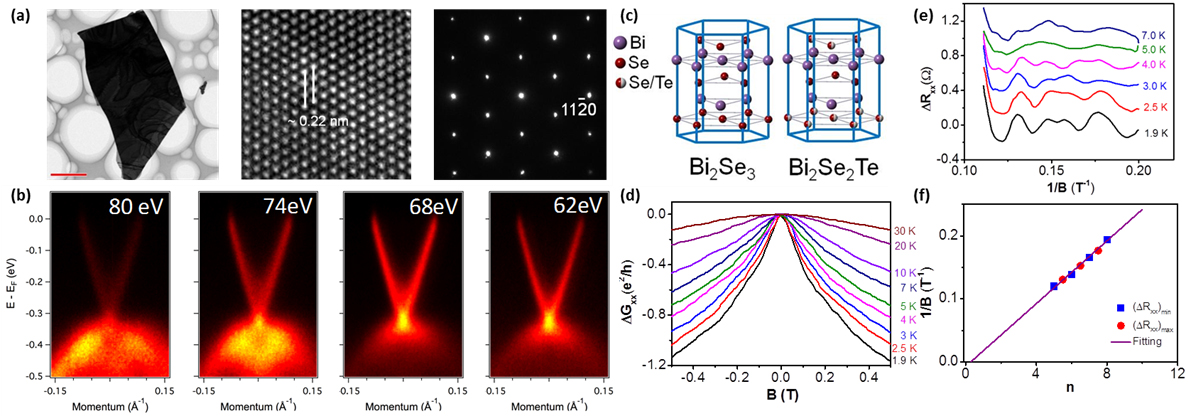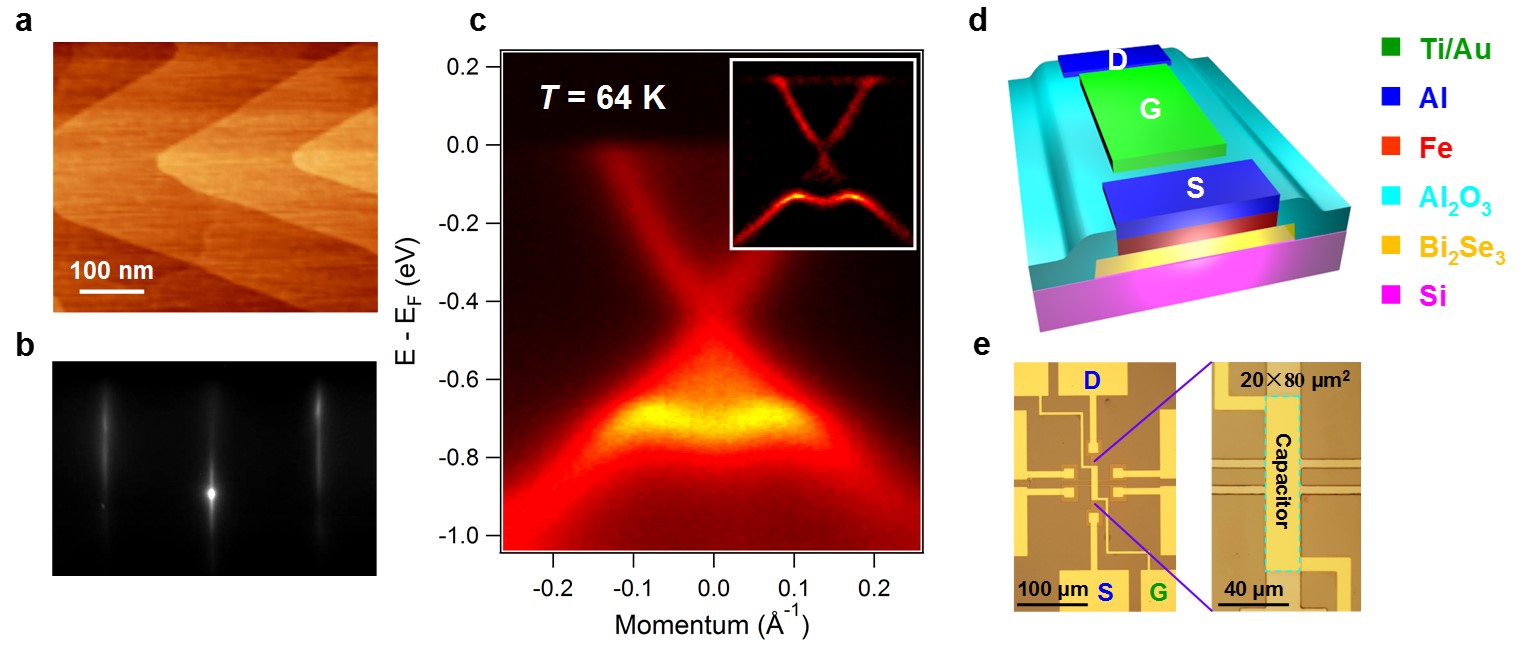Research Description and Recent Highlights:
Our group focuses on the development of multiferroic and ferroelectric materials and topological insulator (TI) nanostructures for nanoelectronic and spintronic applications. The research areas include 1) the development of novel topological thin films and nanostructures by molecular beam epitaxy and tube furnaces, 2) the growth of multiferroic and ferroelectric materials such as cobalt ferrite CoFe2O4and barium titanate BaTiO3, and 3) the integration of magnetic materials with topological insulators for novel device functionalities.
Detailed work involves the following aspects:
1) The growth of topological insulator by MBE, tube furnace, and high temperature sintering furnace.
2) The study of physical properties including low temperature transport, ARPES, MFM, STM, SQUID/VSM, etc.
3) The fabrication and characterization of topological electronic device, such as magnetic tunnel junction, field-effect transistor, photodetectors, and sensors.
4) The investigation of other interesting materials including novel 2D material, magnetic oxides, traditional semiconductor materials such as Si/Ge/ZnO/GaN and their magnetic doping.
A brief summary of our recent research is outlined as follows.
1) We demonstrated the topological surface states in an emerging topological insulator called Bi2Se2Te by uncovering a weak anti-localization effect in Bi2Se2Te during the low-temperature transport measurements. Prominent quantum oscillations in the electrical resistance of bulk crystals under a varying magnetic field suggest that unique carrier transports exist on these surfaces. The research enriches the current family of topological insulators and provides an alternative platform for exploring exotic quantum physical phenomena and low power-dissipation device applications. (Lihong Bao, Faxian Xiu, et al., “Weak Anti-localization and Quantum Oscillations of Surface States in Topological Insulator Bi2Se2Te”,Scientific Reports2, 726 (2012)).
2) We investigated quantum capacitance of topological surface states. We proposed and measured the amount of electrical charge stored in the material under the application of a time-varying electrical voltage (quantum capacitance) to extract information regarding the electron transport on the topological surfaces. Our method allows for the recognition of surface conduction at temperatures up to 60 K. This finding is an important milestone in realizing topological devices for high-temperature applications. (Faxian Xiu, et al. “Quantum Capacitance in Topological Insulators”,Scientific Reports2, 669 (2012)).
3) We are also interested in the optical applications of these topological insulators. Theoretically they are predicted to be excellent candidates for high performance photodetector in the terahertz range (S. C. Zhang, et al. Topological insulators for high-performance terahertz to infrared application, Physical Review B 82, 245107 (2010)). The gapless 3D TI can cover this full spectrum by a single device with high signal-to-noise ratio comparable to multiple structures using the conventional photodetecting material-bulk Hg1-xCdxTe with different fraction x. We are actively working in this area
4) The combination of magnetic/multiferroic oxide and topological insulators will generate very interesting physical phenomena, for example quantum anomalous Hall, image magnetic monopoles and pronounced magneto-optical Kerr effect. In the presence of magnetic contacts to TI, the spin interactions and proximity effects may emerge in the interface and the surface energy gap can be opened upon the perpendicular magnetization the materials. The magnetic oxides present a superior advantage owing to the electrical field controlled magnetization. We hope to couple these interesting magnetic materials with TI to produce novel magnetic devices, photodetectors, and ultrahigh sensitive sensors

